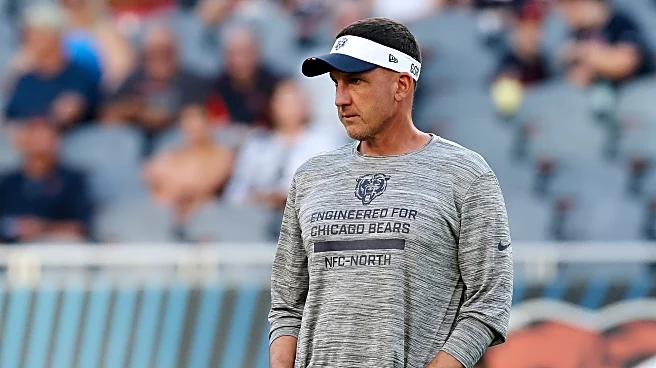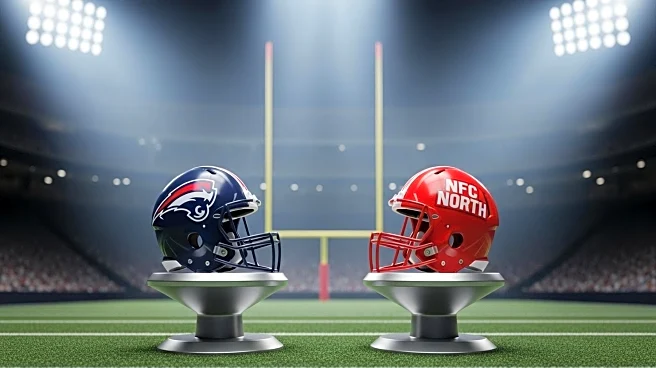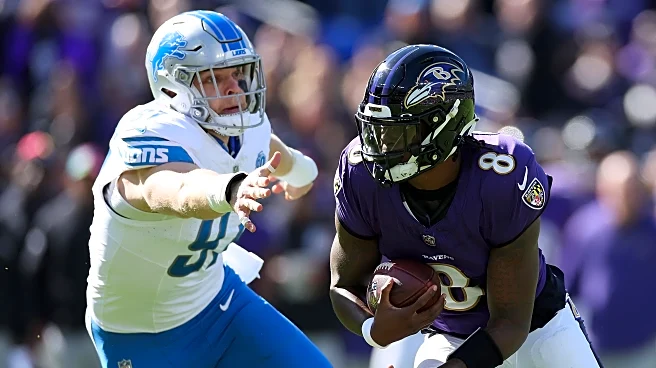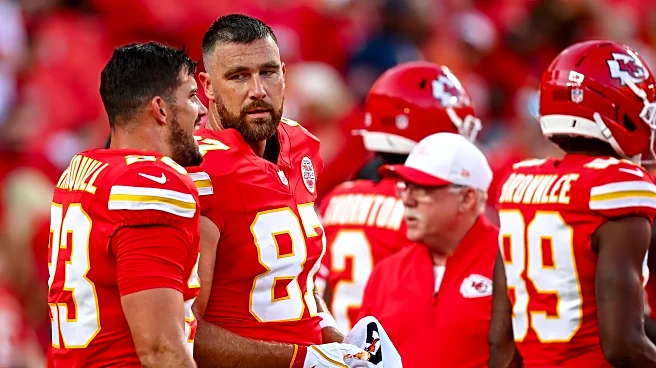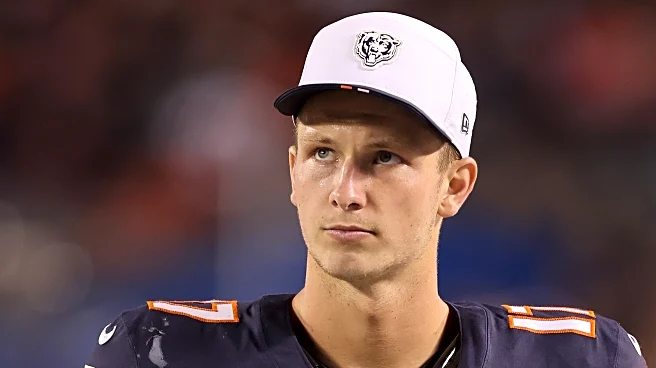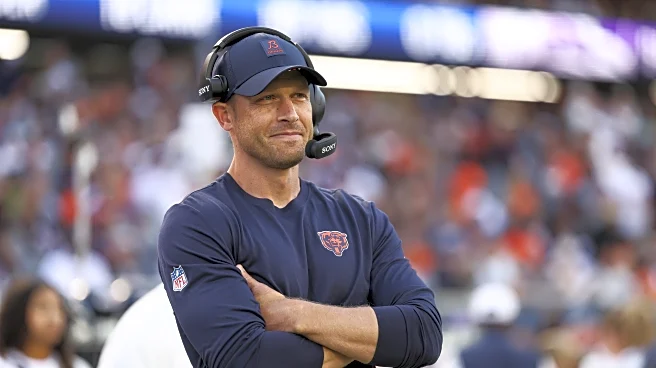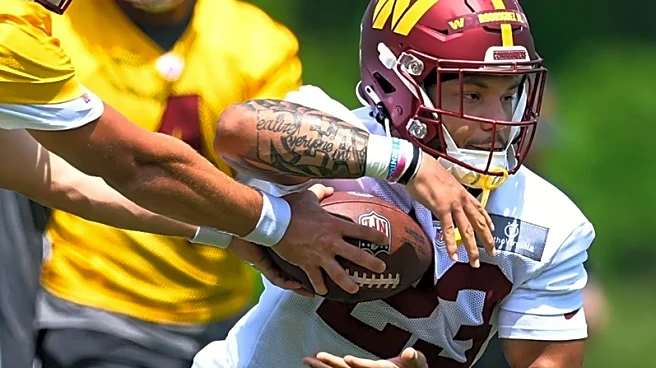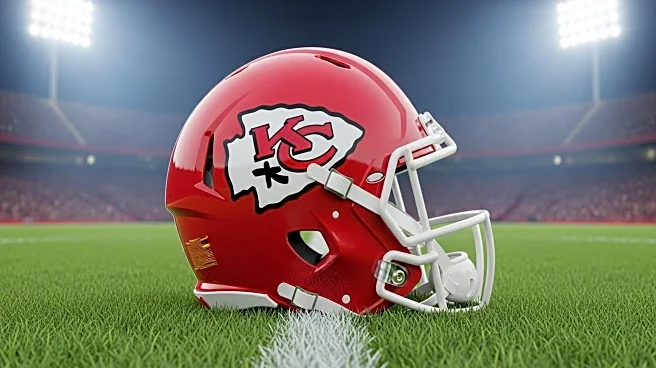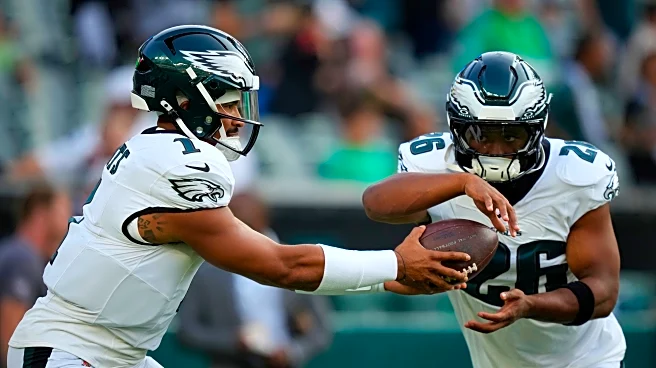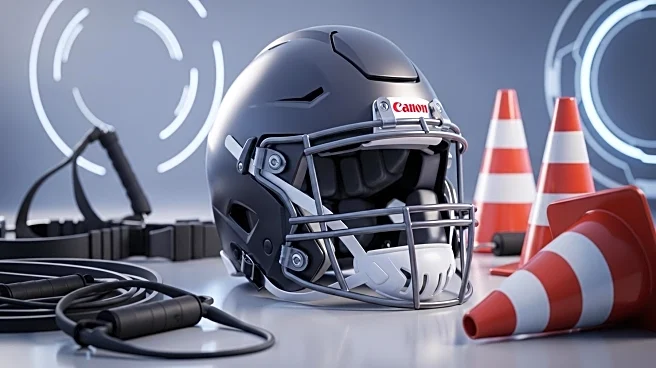What's Happening?
The Chicago Bears are gearing up for their season opener against the Minnesota Vikings on September 8, with significant changes in leadership and player development. General Manager Ryan Poles has discussed the impact of new head coach Ben Johnson and the progress of quarterback Caleb Williams. Johnson's first training camp has been a focal point, as the team aims to revitalize its performance. Williams, entering his second season, has addressed public perceptions and is working to overcome misconceptions about his playing style. Additionally, the status of Vikings safety Harrison Smith, a longtime adversary of the Bears, remains uncertain for the opening game.
Why It's Important?
The changes within the Chicago Bears organization are crucial as they seek to improve their standing in the NFL. The appointment of Ben Johnson as head coach and the development of Caleb Williams are pivotal for the team's strategy and performance. Johnson's leadership could bring new tactics and energy, while Williams' growth as a quarterback is essential for offensive success. The uncertainty surrounding Harrison Smith's participation in the opener could impact the Bears' defensive strategy, as he has historically posed challenges for the team. These developments are significant for Bears fans and stakeholders, as they influence the team's prospects for the upcoming season.
What's Next?
As the season opener approaches, the Bears will continue to refine their strategies and address any remaining uncertainties. The team will focus on integrating Johnson's coaching style and maximizing Williams' potential on the field. The outcome of the game against the Vikings will be a critical indicator of the Bears' readiness and potential for the season. Fans and analysts will be watching closely to see how these changes translate into performance and whether the Bears can overcome past challenges.
Beyond the Headlines
The Bears' organizational changes reflect broader trends in the NFL, where teams are increasingly focusing on leadership and player development to gain competitive advantages. The emphasis on overcoming public perceptions and misconceptions highlights the importance of player image and media relations in professional sports. These dynamics could influence how teams approach player management and public engagement in the future.


